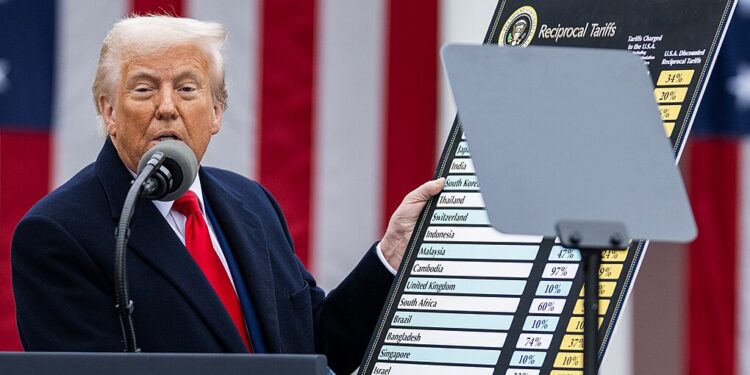President Donald Trump announced Monday that all medium and heavy-duty trucks imported into the United States will face a 25% tariff starting November 1, representing a significant escalation in efforts to protect U.S. companies from foreign competition.
Last month, Trump stated heavy truck imports would face new duties on national security grounds beginning October 1. The president said the tariffs were implemented to protect manufacturers from “unfair outside competition” and would benefit U.S.-based companies.
Trade deals with Japan and the European Union established a 15% tariff on light-duty vehicles, though it remains unclear whether larger vehicles will face the same rate. The Trump administration allowed producers to deduct the value of U.S. components from tariffs on light-duty vehicles assembled in Canada or Mexico.
Medium and heavy-duty vehicles include delivery trucks, transit and school buses, semi-trucks, and tractor-trailer trucks.
The U.S. Chamber of Commerce opposed the new tariff, advising the Commerce Department against implementation. The organization noted the top five import sources, Mexico, Canada, Japan, Germany, and Finland, are “allies or close partners of the United States posing no threat to U.S. national security.”
Mexico is the largest exporter of medium and heavy-duty trucks to the U.S. among those countries. In 2024, the U.S. imported close to $128 billion in heavy vehicle parts from Mexico, totaling approximately 28% of U.S. imports.
The tariffs could affect companies like Chrysler-owned Stellantis, which produces heavy-duty Ram trucks and commercial vans in Mexico. Stellantis discouraged the White House from imposing steep tariffs on its Mexican-produced trucks.
Mexico opposed the tariffs, telling the Commerce Department in May that trucks from Mexico contain about 50% American content on average. According to the U.S. International Trade Administration, Mexico hosts 14 manufacturers of buses, trucks, and tractor trucks, plus two engine manufacturers.
The tariff announcement affects Washington state’s economy, where commercial transportation and logistics represent significant sectors. The Port of Seattle and Port of Tacoma handle substantial volumes of imported vehicles and vehicle parts, with tariffs potentially impacting pricing for commercial vehicles used by regional businesses.







